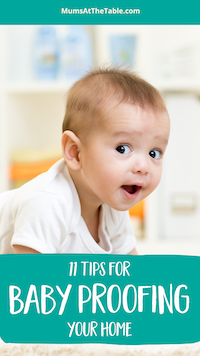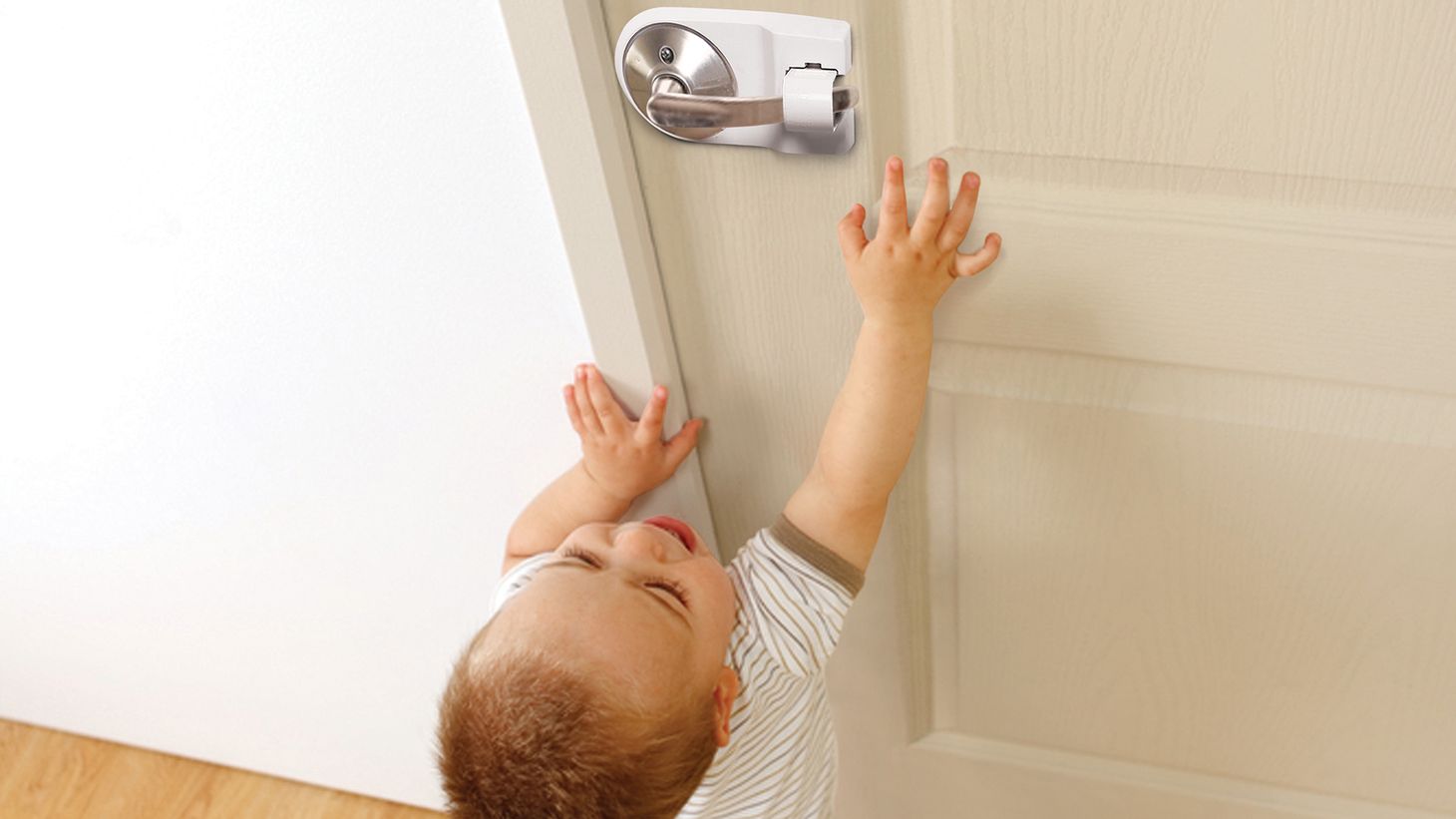If you’re a new parent or about to become one, no doubt you’re thinking about making your home a safe environment for your growing family. Baby-proofing needs to be one of your important priorities.
Making your home baby friendly, doesn’t need to be difficult, but you do need to know what to watch out for. Before you go out or head online to the likes of Amazon to buy every baby-proofing product available, consider the following to decide if you really need it.
We even have some child safety hacks to keep young children safe—without breaking the bank.
What are the potential safety hazards in the home?
I don’t want to scare you, but there are many hazards throughout the home. Things such as sharp corners, electrical cords, chemicals, heavy items that could fall and cabinet doors all pose as potential hazards to your baby’s safety. However, with preparation, a lot can be improved.
Preparation and recognising the potential issues is what it’s all about. Remember though that every house is different and every child is too. Your child may never even look twice at a cabinet, but what about that visiting cousin or friend? They may have other ideas, so make sure your home is safe for all children, not just your own.
11 baby-proofing tips to keep your little one safe
Look out for the obvious and hidden dangers. Children learn and discover the world by experiencing things and unfortunately, that can sometimes mean getting hold of a knife from the drawer, unplugging the computer or pulling on a tablecloth.
1. Block access
Curious babies love areas that are out of bounds. Use baby gates to block access to rooms (think laundry, kitchen, bathroom, garage, office, stairs).
2. Safety gates and latches
In addition to the safety gates, add safety latches to cupboards, drawers and cabinets. This is especially important if you store cleaning products or medicine in them. Gates can be tiresome to keep shut all the time but you want to be on the safe side. Don’t forget the risk of your little one getting into dangerous items or climbing on to the toilet seat.
3. Window coverings
If you can’t install cordless blinds or shades, invest in blind cord wind-ups. They keep blind cords out of the reach of babies in their cots. It also keeps their older siblings safe. Window blinds with cords that are too long can become a strangulation risk. Also remember to keep cots, beds and changing tables away from windows and window fittings whenever possible.
4. Power points
Block off power points with child-proof outlet covers or safety plugs.
5. Doors
Child-proof doors by preventing them from slamming on little fingers. Secure them using a door-stop or under door-gripper.
6. Sharp corners
Lots of toddlers get nasty bumps on their heads due to colliding with the corner of a table. Baby-proof corners, especially the sharp edges of tables with a baby-proof bumper.
Once children become mobile, there are other obvious steps. Get down on all fours and look up at the world from the point of view of a crawling child. It’s amazing the hidden dangers you’ll immediately identify.
7. Medications
Move regular medications usually kept in the bathroom or beside your bed up and out of reach of a child and preferably locked away.
8. Falling furniture
Ensure bookcases and TVs are secure and won’t fall on climbing children.
9. Cooking
When cooking, move pot handles to the side so kids can’t get hold of them and pull hot water on top of themselves.
10. Dangerous items
Move sharp objects, knives and poisons, including medicines, out of reach.
11. Supervise, supervise, supervise
Keep children within sight and only allow a trustworthy and loving adult to supervise them.
Child safety hacks to keep young children safe—without breaking the bank
Watch this video to discover some cheap ways to baby-proof your house with items you probably already have at home. It includes affordable ways to:
- Prevent fingers from being squashed by slammed doors
- Preventing accidental electrocution thanks to curious fingers in electrical outlets
- Create corner protectors for virtually any sharp furniture corner
Other hazards to watch out for when baby-proofing your home
There are some steps you should take even before your due date, but for others, you can always wait till your baby is more mobile.
Coffee tables
This is especially important if the living room is also the child’s play area. Choose either a table with rounded-corners which is really solidly made (no glass) or nothing at all. Remember to also keep an eye on any food and hot drinks that you place on the table as they can be a hazard of their own.
Falls from beds
Before bedtime, ensure the side of your child’s cot is up. If your child is older, install a bedrail to stop them from falling out of bed and hurting themselves.
Watch out for toxins
Many people don’t realise that the residue left by everyday cleaning chemicals, particularly while still wet, can be harmful. Likewise, the dishwasher drawer can be toxic even after the load is finished. Also, watch out for plants in the garden, including some houseplants, and most household cleaners.
Pet doors
These doors come in different sizes and children can get stuck in them. Many pet doors can be locked so that nothing can pass through and if this is an option, do it.
Choking hazards
Small objects present a very real suffocation risk for young children, so keep an eye out for them and make certain they’re out of reach. However, no matter how careful you are, accidents can still happen, so be sure you know what to do when your child swallows something.
Simple steps for safe and happy families
Baby-proofing may seem like a lot of things to think about, but taking the simple steps to make your home safe could very well save your baby’s life and give you peace of mind.
Read next

How helpful was this article?
Click on a star to rate it!
0 / 5. 0
Be the first to rate this post!
Adriana Wales
Related posts
Subscribe
Receive personalised articles from experts and wellness inspiration weekly!

